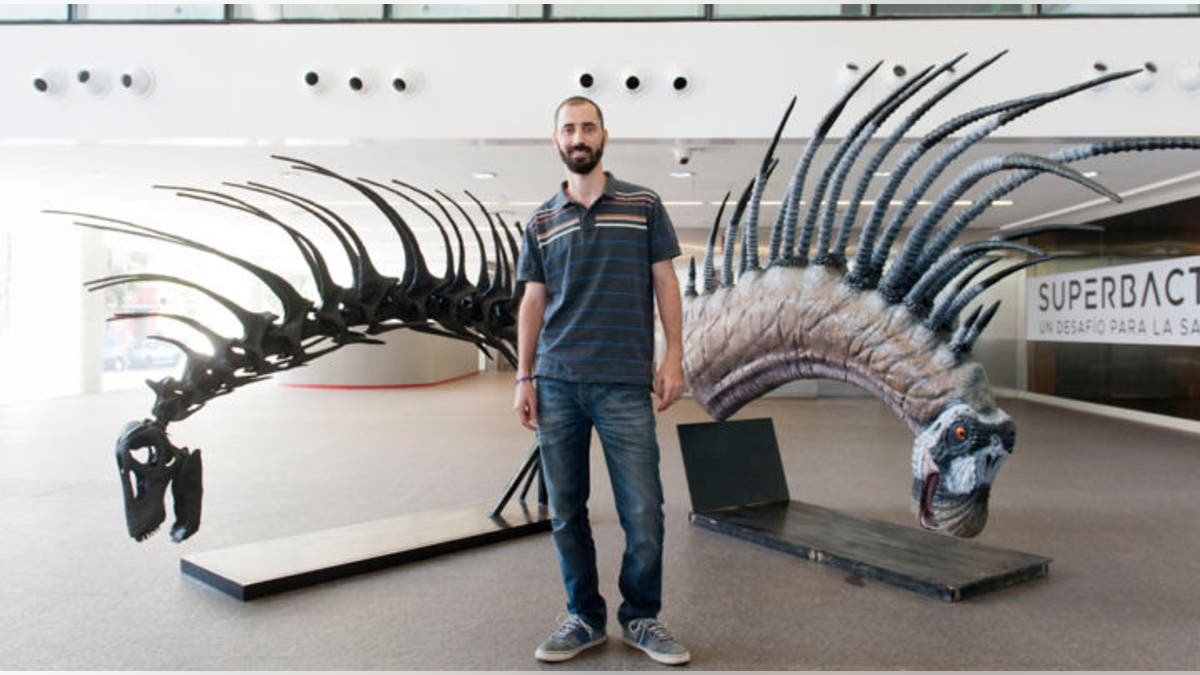Table of Contents
- New Dinosaur Species Discovered 2024 - Marj Stacie
- Pin von Luis paulo auf pelontologia in 2024 | Dinosaurier, Prähistorisches
- Pin by John Whitesell on ANIMALS- Extinct in 2024 | Prehistoric animals ...
- Pin on Creatures of various designs in 2024 | Prehistoric art ...
- Species New to Science: [Paleontology • 2024] Diving Dinosaurs? Caveats ...
- Upcoming releases from CollectA (New for 2024)(Pt. 4) – Dinosaur Toy Blog
- Fredward95 on Twitter in 2024 | Prehistoric animals dinosaurs ...
- Pin by Jordann Kissling on Dinosaurs in 2024 | Prehistoric wildlife ...
- Pin by Carla Legerton on Dinosaurs in 2024 | Prehistoric animals ...
- Pin by réka on dinoszauruszok in 2024 | Dinosaur illustration, Paleo ...

The world of paleontology has been abuzz with the latest discovery of a new, giant horned dinosaur in the ancient swamps of Montana. This remarkable find has shed new light on the prehistoric era, offering a fascinating glimpse into the lives of these magnificent creatures. In this article, we will delve into the details of this extraordinary discovery and explore the significance of this new species.


Ancient Swamp Dweller

The newly discovered dinosaur, estimated to have roamed the earth over 75 million years ago, has been identified as a member of the ceratopsian family. This group of horned dinosaurs is characterized by their distinctive frills and horns, which were likely used for defense, intimidation, and even attracting mates. The Montana discovery is particularly noteworthy, as it provides evidence of a previously unknown species that inhabited the ancient swamps of North America.


Uncovering the Fossil Record

The fossilized remains of the new dinosaur were unearthed in the Hell Creek Formation, a renowned fossil site in Montana. The excavation process was meticulous, with paleontologists carefully extracting the bones from the rock matrix. The fossil record revealed a massive creature, measuring over 30 feet in length and weighing several tons. The dinosaur's impressive size and distinctive horned features have sparked excitement among scientists and dinosaur enthusiasts alike.

Implications for Dinosaur Research
The discovery of this new horned dinosaur has significant implications for our understanding of the ancient ecosystem. The presence of this species in the Montana swamps suggests a more diverse and complex food chain than previously thought. Furthermore, the finding provides valuable insights into the evolution of ceratopsian dinosaurs, which were thought to have originated in Asia. The Montana discovery challenges this theory, suggesting that these dinosaurs may have had a more widespread distribution across North America.

A Window into the Past
The discovery of this new dinosaur species is a testament to the importance of continued exploration and research into the ancient world. As we continue to uncover the secrets of the past, we gain a deeper understanding of the evolution of life on earth. The Montana discovery serves as a reminder of the many mysteries still waiting to be uncovered, and the significance of preserving our natural heritage for future generations.
In conclusion, the discovery of this new, giant horned dinosaur in the ancient swamps of Montana is a groundbreaking find that has shed new light on the prehistoric era. As we continue to learn more about this remarkable creature, we are reminded of the awe-inspiring diversity of life on earth and the importance of preserving our natural heritage. Whether you're a seasoned paleontologist or simply a dinosaur enthusiast, this discovery is sure to captivate and inspire, offering a fascinating glimpse into a bygone era.
![Species New to Science: [Paleontology • 2024] Diving Dinosaurs? Caveats ...](https://blogger.googleusercontent.com/img/b/R29vZ2xl/AVvXsEgVjNxMo1Gg8jQUjMJziEDsQSWhxGTTioOpslbkNKfNkHYG36JuHcbtUtIvIowrbfOzxgEBbj1UR9FTVdsfXecAtbQPYKHSeaGqHzmXJiQAGsD9qM-pnHOri5Zad2E2eT_lX8-OINgiZxD7h4OSwsHqWqmJOklzzNf0Wiyog_7873G0LpNpDgrSrQnd9rpX/s1688/Spinosaurus_aegyptiacus_2024-Myhrvold_Baumgart_Vidal__paleoArt_@playerDNG.jpg)
Key Takeaways:
- A new, giant horned dinosaur has been discovered in the ancient swamps of Montana.
- The dinosaur is estimated to have roamed the earth over 75 million years ago.
- The discovery provides evidence of a previously unknown species and sheds new light on the evolution of ceratopsian dinosaurs.
- The finding has significant implications for our understanding of the ancient ecosystem and the distribution of ceratopsian dinosaurs across North America.
Stay tuned for more updates on this exciting discovery, and join the conversation on social media using the hashtag #DinoDiscovery.